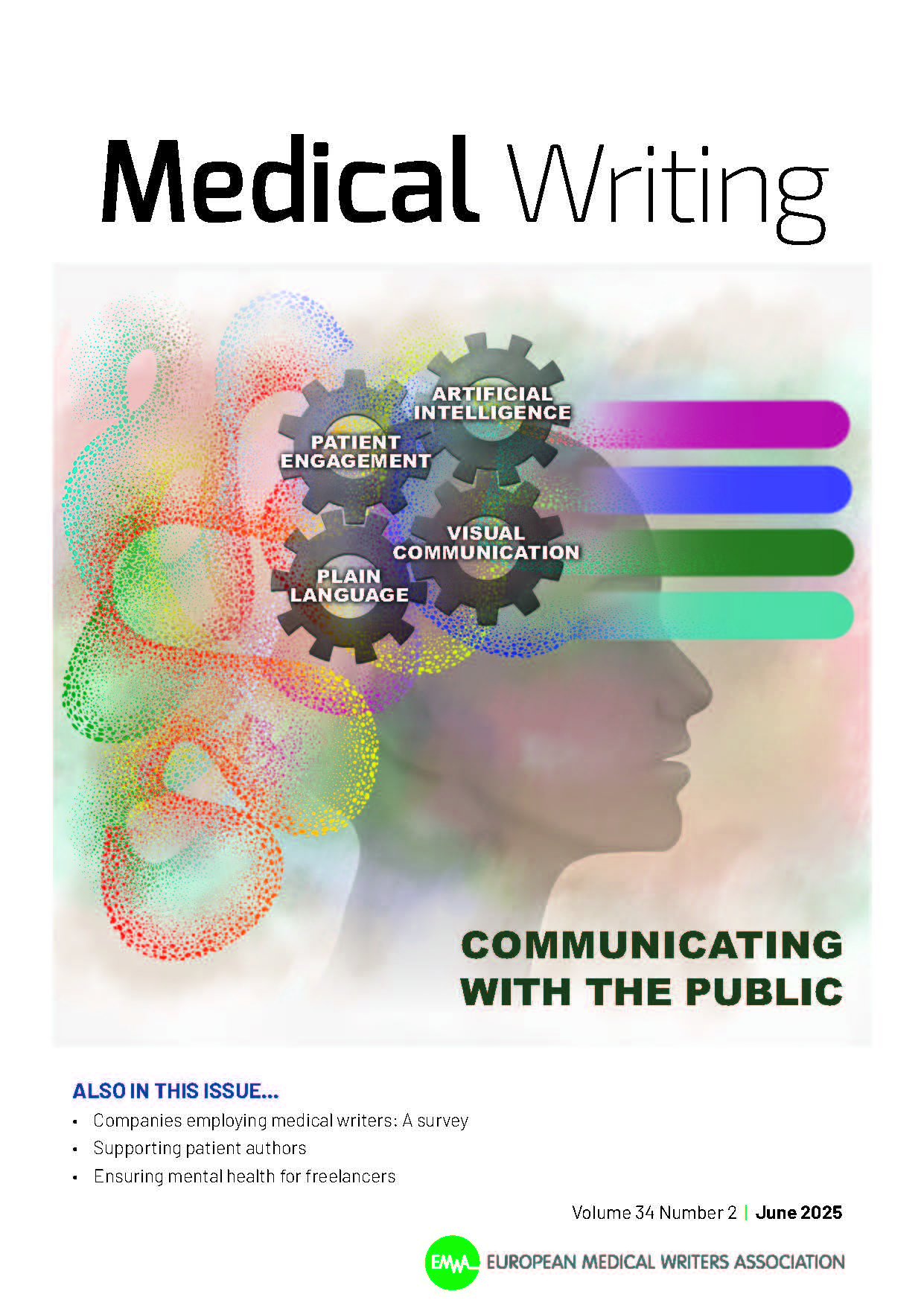
Volume 34, Issue 2 - Communicating With the Public
Visual aids in patient-focused drug development and routine clinical practice
Authors: Helena K. Jambor, Carola Krause, Judit Mészáros
Abstract
Effective medical communication is critical for patient consent, adherence to treatment, and improved health outcomes. Visual aids, such as infographics, diagrams, and charts, have proven invaluable for enhancing comprehension, particularly of complex medical concepts like risks and numerical data. Historically, medical visualisations have played a vital role, from Renaissance anatomical atlases to modern-day graphical abstracts and patient-centred infographics. Innovations in visual communication underscore their transformative power in healthcare. Despite their long- standing utility, visual aids remain underused in patient information, which often suffers from overly complex language and poor design. The integration of visuals into clinical trial reporting, informed consent forms, and treatment plans has gained momentum, supported by guidelines advocating for patient-focused communication. Recent studies confirm that well-designed visuals improve comprehension, engagement, and equity in healthcare communication. As user-friendly tools become more accessible, visual aids will become integral in advancing patient-centred, inclusive healthcare practices.
Medical Writing. 2025;34(2):56–64. https://doi.org/10.56012/ucgj1753
 Download the full article
Download the full article
Search
Articles
Links
Editoral Board
Editor-in-Chief
Co-Editors
Senior Editor
Victoria White
Managing Editor
Alicia Brooks Waltman
Associate Editors
Section Editors
AI/Automation
Biotechnology
Digital Communication
EMWA News
Freelancing
Gained in Translation
Getting Your Foot in the Door
Good Writing Practice
Pablo Izquierdo / Alison McIntosh
In the Bookstores
Publications
Medical Communications/Writing for Patients
Medical Devices
My First Medical Writing
News from the EMA
Pharmacovigilance
Regulatory Matters
Regulatory Public Disclosure
Louisa Ludwig-Begall / Sarah Kabani
The Crofter: Sustainable Communications
Veterinary Writing
Editors Emeritus
Layout Designer
Chris Monk
 Visit the EMWA website
Visit the EMWA website